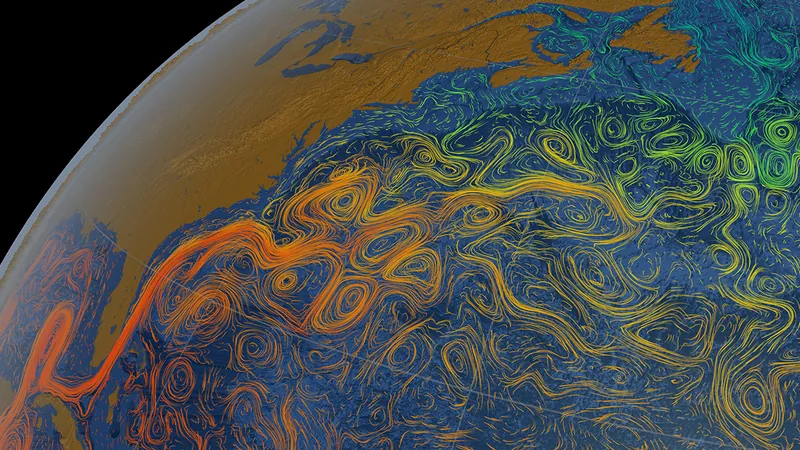
Shocking Discovery: The North Atlantic Ocean is Becoming Saltier!
2024-10-29
Author: Jia
Recent scientific research has unveiled a startling trend: the salinity levels of ocean waters are not uniform and are diverging significantly between key ocean basins. Over the past five decades, data collected from both ship and satellite sensors indicates that the contrast in salinity between the North Atlantic and North Pacific Oceans has risen by approximately 6%. While regions in the subtropical Pacific are experiencing a decrease in salinity (becoming fresher), those in the Atlantic are getting saltier. This alarming shift, highlighted in a recent study published in Nature Climate Change, may be linked to rising ocean temperatures and altered wind patterns.
According to Yuanlong Li, an oceanographer at the Institute of Oceanology of the Chinese Academy of Sciences, the findings are groundbreaking. Previous studies primarily focused on how freshwater influxes affect salinity. However, Li's research reveals that ocean dynamics influenced by surface winds and overall ocean warming are also crucial factors in these changes.
The study aims to dissect how these salinity differences between the two oceans contribute to varying climate change impacts, like sea level rise and decreased oxygen levels. By examining salinity data in conjunction with climate models, Li and his team were able to identify how much salinity variation stems from changes in ocean currents and how much is influenced by freshwater sources, such as rainfall.
Their findings reveal that the top 800 meters of tropical and subtropical ocean waters have seen an increase in salinity by about 3.6%, with a remarkable 6% increase noted right at the surface. The study explored two main processes affecting salinity: heaving and spicing.
What Are Heaving and Spicing?
Heaving refers to the vertical movement of water columns without changing temperature—think of it as adjusting the layers of a cake without changing their flavor. In the North Atlantic, this phenomenon is driven by changing ocean currents and enhanced wind patterns. Stronger westerly winds, in particular, have trapped saltier waters in mid-latitude regions, escalating the overall salinity levels.
On the other hand, spicing involves the mixing of water masses, altering their heat and salt content. The study indicates that ocean warming is primarily responsible for this effect, which ultimately deepens the mixing layers in the ocean. Notably, as the warm surface waters of the North Atlantic migrate northward, they alter the boundaries and lead to changes in salinity and temperature profiles.
Experts believe these findings are pivotal. Aixue Hu, a climate scientist with the National Center for Atmospheric Research, notes that this research takes a refreshing ocean-centric approach, moving beyond the traditional atmospheric perspectives on salinity.
However, the story doesn’t end here. Climate scientists like Arnold L. Gordon have pointed out that other climatic factors, such as El Niño and La Niña patterns, may also significantly affect salinity trends. Additionally, salty waters from the Indian Ocean are being gradually pushed into the Atlantic, further complicating these dynamics.
As we move forward, in-depth research is necessary to fully understand the implications of rising salinity levels in the North Atlantic and their potential consequences on global climate patterns.
Stay tuned for more eye-opening revelations as scientists unravel the complex web of oceanic mechanisms affecting our planet's climate!



 Brasil (PT)
Brasil (PT)
 Canada (EN)
Canada (EN)
 Chile (ES)
Chile (ES)
 España (ES)
España (ES)
 France (FR)
France (FR)
 Hong Kong (EN)
Hong Kong (EN)
 Italia (IT)
Italia (IT)
 日本 (JA)
日本 (JA)
 Magyarország (HU)
Magyarország (HU)
 Norge (NO)
Norge (NO)
 Polska (PL)
Polska (PL)
 Schweiz (DE)
Schweiz (DE)
 Singapore (EN)
Singapore (EN)
 Sverige (SV)
Sverige (SV)
 Suomi (FI)
Suomi (FI)
 Türkiye (TR)
Türkiye (TR)